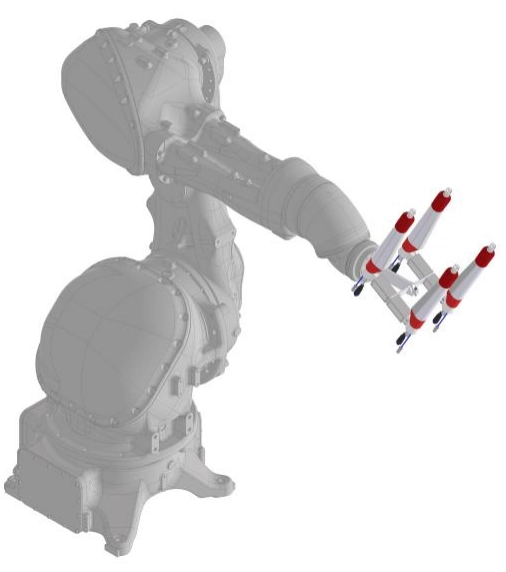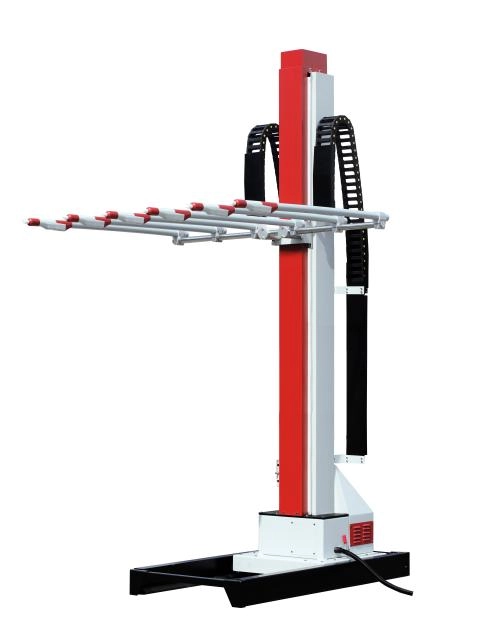Content Menu
● Understanding Spray Gun Units
>> What Is a Spray Gun Unit?
>> Key Components of Spray Gun Units
● Types of Spray Gun Units
>> Conventional Spray Guns
>> HVLP (High Volume Low Pressure) Spray Guns
>> LVLP (Low Volume Low Pressure) Spray Guns
>> Airless Spray Guns
● Factors to Consider Before Buying
>> Spray Gun Size and Capacity
>> Material Compatibility
>> Air Compressor Compatibility
>> Adjustability and Control
>> Ease of Cleaning and Maintenance
● Spray Gun Features to Know
>> Nozzle Size and Spray Pattern
>> Cup Types: Gravity Feed vs. Siphon Feed
>> Trigger Types
>> Weight and Ergonomics
● Buying Tips for Specific Uses
>> Automotive Spray Guns
>> Woodworking Spray Guns
>> Industrial Spray Guns
>> DIY and Home Use
● Maintenance and Safety Tips
>> How to Clean Your Spray Gun Unit
>> Safety Precautions
● Frequently Asked Questions (FAQs)
When considering the purchase of a spray gun unit, it's essential to understand the key factors that influence performance, suitability, and cost-effectiveness. Spray guns are widely used in automotive painting, woodworking, industrial coatings, and DIY projects. With various types and features available, making an informed decision requires knowledge about the basics, types, specifications, and maintenance of spray gun units. This article provides a comprehensive guide to help you choose the best spray gun unit for your needs.

Understanding Spray Gun Units
What Is a Spray Gun Unit?
A spray gun unit is a device designed to apply paint, varnish, or other coatings evenly across surfaces using compressed air, electricity, or fluid pressure. It atomizes the liquid material into fine droplets, allowing for a smooth and uniform finish. Spray gun systems often come with accessories such as hoses, compressors, and nozzles.
Key Components of Spray Gun Units
- Nozzle: The part that controls the shape and size of the spray pattern.
- Air Cap: Works with the nozzle to atomize the paint.
- Fluid Tip: Regulates the flow of coating material.
- Trigger: Controls airflow and paint flow.
- Paint Cup: Holds the paint or coating material.
- Compressor (if included): Supplies compressed air for atomization.
Types of Spray Gun Units
Choosing the right type depends on the project requirements, coating material, and budget. The main types include:
Conventional Spray Guns
These use high-pressure compressed air to atomize paint and typically produce more overspray and wasted material. While simple and widely used, they require skill to minimize paint waste.
HVLP (High Volume Low Pressure) Spray Guns
HVLP guns use a high volume of air at low pressure to atomize paint, reducing overspray and providing better transfer efficiency. They are popular for automotive and woodworking applications because they offer a smooth finish with less paint waste.
LVLP (Low Volume Low Pressure) Spray Guns
LVLP guns operate similarly to HVLP but require less airflow, making them ideal for smaller compressors and delicate jobs. They produce fine finishes with less overspray and are energy efficient.
Airless Spray Guns
Airless systems pump paint at very high pressure directly through a small tip, atomizing the paint without compressed air. They are suitable for large surfaces and thicker coatings such as primers and heavy paints, delivering fast and efficient coverage.
Factors to Consider Before Buying
Spray Gun Size and Capacity
Consider the size of your projects. Large surface areas require a gun with a high paint capacity and wide spray pattern, while smaller detailed work needs smaller nozzles and lighter guns for better control.
Material Compatibility
Check if the spray gun supports the type of coating you will use—whether it's water-based, solvent-based, or specialty coatings. Some guns are better suited for thin materials, others for thicker liquids.
Air Compressor Compatibility
Spray guns require a specific air pressure and volume. Ensure your existing compressor meets these requirements or plan to purchase a compatible compressor to avoid performance issues.
Adjustability and Control
Look for guns with adjustable nozzle sizes, air pressure controls, and fluid flow controls. These features allow you to tailor the spray pattern and paint output to suit different applications.
Ease of Cleaning and Maintenance
Spray guns can clog or degrade if not cleaned properly. Choose models that are easy to disassemble and clean, with accessible parts and corrosion-resistant materials.
Spray Gun Features to Know
Nozzle Size and Spray Pattern
Nozzles typically range from 0.8mm to 2.5mm or more. Smaller nozzles deliver finer finishes with thin materials, while larger nozzles handle heavier coatings. Spray patterns can be round, vertical, or horizontal; some guns allow adjustable patterns.
Cup Types: Gravity Feed vs. Siphon Feed
- Gravity Feed: Paint cup is positioned above the gun, using gravity to feed paint. These guns typically use less paint and provide better control.
- Siphon Feed: Paint cup is below, relying on suction to draw paint. These are better for larger jobs but may waste more paint.
Trigger Types
Some spray guns have dual-stage triggers allowing separate control of air and paint flow; others have single-stage triggers controlling both simultaneously. Dual-stage triggers offer more precise control.
Weight and Ergonomics
If you plan extended use, consider the weight and grip comfort. Lightweight guns with ergonomic handles reduce fatigue and improve accuracy.
Buying Tips for Specific Uses
Automotive Spray Guns
Look for HVLP models with fine control, suitable nozzles for automotive paints, and good atomization quality to ensure smooth, even coats. Models with replaceable needle and nozzle sets are advantageous.
Woodworking Spray Guns
Choose units that handle thin stains and finishes well—gravity feed HVLP guns are common choices. They help reduce overspray on intricate wood detailing.
Industrial Spray Guns
Airless spray guns or high-capacity HVLP guns are preferred for heavy-duty coatings and large areas. Durability and corrosion resistance are critical features.
DIY and Home Use
For occasional use, compact LVLP spray guns or small gravity feed HVLP models offer good balance between performance and price. Ease of cleaning and low paint volume requirements are beneficial.
Maintenance and Safety Tips
How to Clean Your Spray Gun Unit
- Disassemble immediately after use.
- Use manufacturer-recommended solvents or water (depending on paint type).
- Clean the nozzle, air cap, and fluid passages thoroughly.
- Lubricate moving parts as instructed.
- Avoid harsh tools that can damage seals or surfaces.
Safety Precautions
- Wear protective masks and goggles to avoid inhaling paint particles.
- Use spray guns in well-ventilated areas.
- Follow electrical safety for powered units.
- Properly store flammable paints and solvents away from heat sources.

Frequently Asked Questions (FAQs)
1. What type of spray gun is best for beginners?
HVLP spray guns are often recommended for beginners due to their efficiency, lower overspray, and relatively easy adjustment.
2. Can I use any spray gun with my existing air compressor?
Not necessarily. Check the spray gun's air volume and pressure requirements to ensure compatibility with your compressor's capacity.
3. How often should I clean my spray gun?
It should be cleaned thoroughly after every use to prevent clogging and maintain performance.
4. What is the difference between HVLP and airless spray guns?
HVLP guns use compressed air to atomize paint, ideal for fine finishes, while airless guns pump paint at high pressure without air, suitable for large and thick coatings.
5. Are gravity feed spray guns better than siphon feed?
Gravity feed guns are generally more efficient with paint consumption and easier to clean, making them preferred for detail work, but siphon feed systems can handle larger volumes.
Hot Tags: China, Global, OEM, private label, manufacturers, factory, suppliers, manufacturing company










































 .
. 